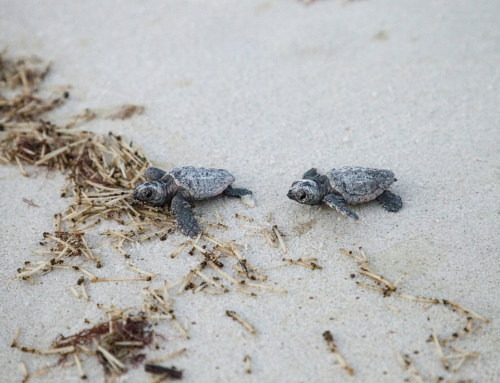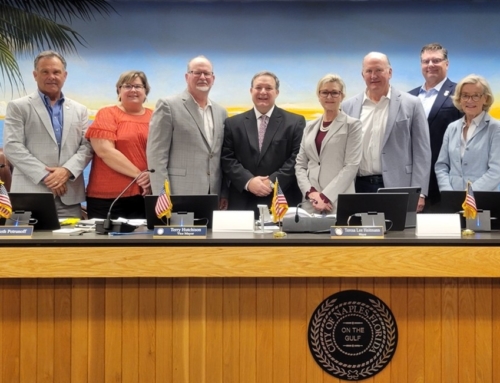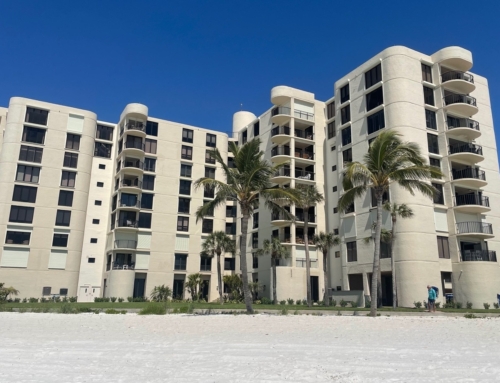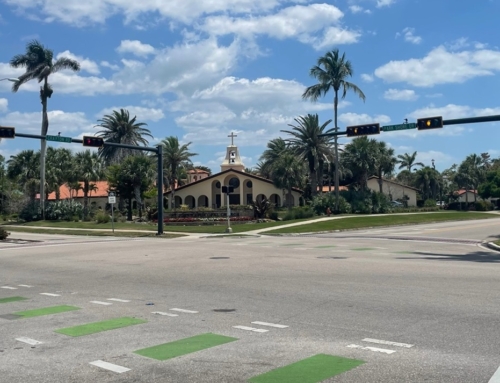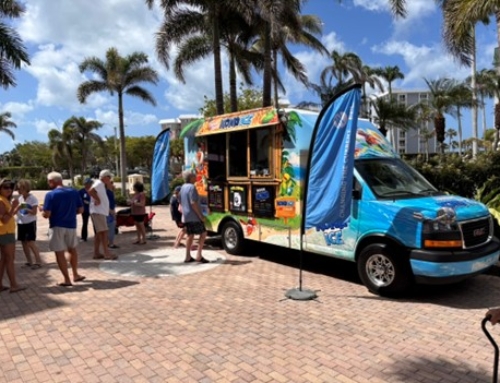Please submit any questions you might have to gsacnaples.org/contact and if we can’t answer we will find an authority who can!
Question.
People tend to blame Red Tide on a lot of things but is there a definitive cause? Do humans and hurricanes make it worse?
Answer.
Current scientific data suggests that red tide initiates 50 -100 miles offshore in response to an upsurge of nutrient-rich deep water onto the West Florida Shelf, similar to a river flowing up over a riverbank. However, it is a “Goldilocks” phenomenon. If the current hits the shelf break too hard, lots of nutrient-rich water spills onto the shelf, which causes a different type of algae (Diatoms) to bloom. If the current hits the shelf break too softly, too little nutrient-rich water spills up onto the shelf and no bloom happens. If conditions are “just right” once the upwelled water spills up onto the shelf, it moves eastward towards the coastline. Red tide will start growing in these upwelled waters as the water moves east. As waters shallow and intersect the coast, the red tide surfaces and concentrates (like a traffic jam) and you get a ‘sudden bloom’.
There is no evidence that we humans play any role in causing red tide. Once the red tide moves up onto the coast, however, it can tap into human-derived nutrients (fertilizers, wastewater, etc.), but not directly. Typically, these nutrients are transported to our coastal waters via run-off and freshwater river discharge. Karenia brevis*(red tide) is a marine organism and cannot survive in freshwater. So, the run-off has to mix with salty Gulf of Mexico water before red tide can access the nutrients. Run-off may provide 10-25% of nutrients, so – in a nutshell – we can make red tide worse, but probably not ten times worse or even twice as bad.
We know red tide was really bad after Irma and Charlie, so there may be a connection between worse red tides and hurricanes, but the connection is not clear-cut.
Red tide typically starts in late September or early October (so Ian may not have influenced the start of the bloom) and typically ends by late January or early February. Red Tide was still going strong in March and April following Irma and Charlie, but it was decreasing by mid-March this year after Ian.
Did Hurricane Ian cause an increase in nutrients? The jury is still out on that in my opinion. The data I have seen to date suggests that nutrients were elevated at some sampling sites, but not at others. There is no evidence of basin-wide elevated nutrients and definitely nothing to suggest water quality was incredibly bad all over the place after Ian. There are lots of moving parts here and lots of samples still need to be processed and analyzed (and synthesized across research groups) before we get a true “big picture” view of how water quality was affected by Ian.
Therefore, there is no evidence that people cause red tide. We may make it worse once it starts. The question is – how much worse? Could climate change be causing more “Goldilocks” scenarios causing red tide? Maybe, but we just don’t know enough about what the “Goldilocks moment” is exactly.
*Some algae species, like the dinoflagellate Karenia brevis color the ocean surface a deep red, inspiring the name “red tide.”
Answered by our expert Dr Michael Parsons, Professor of Marine Science at Florida Gulf Coast University and Member of the Governor’s Blue-Green Algae Task Force.



